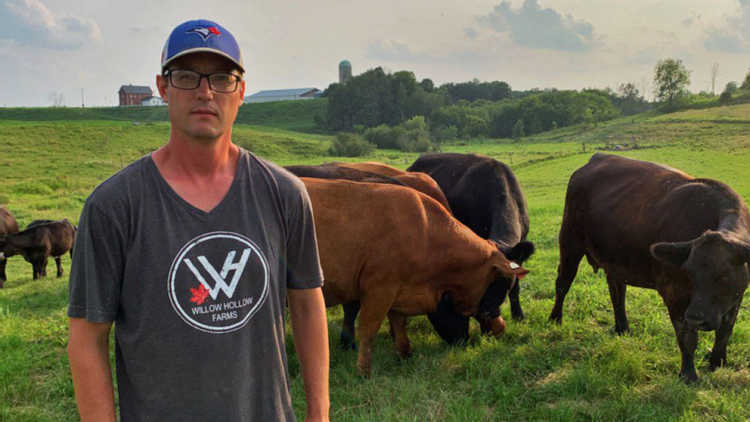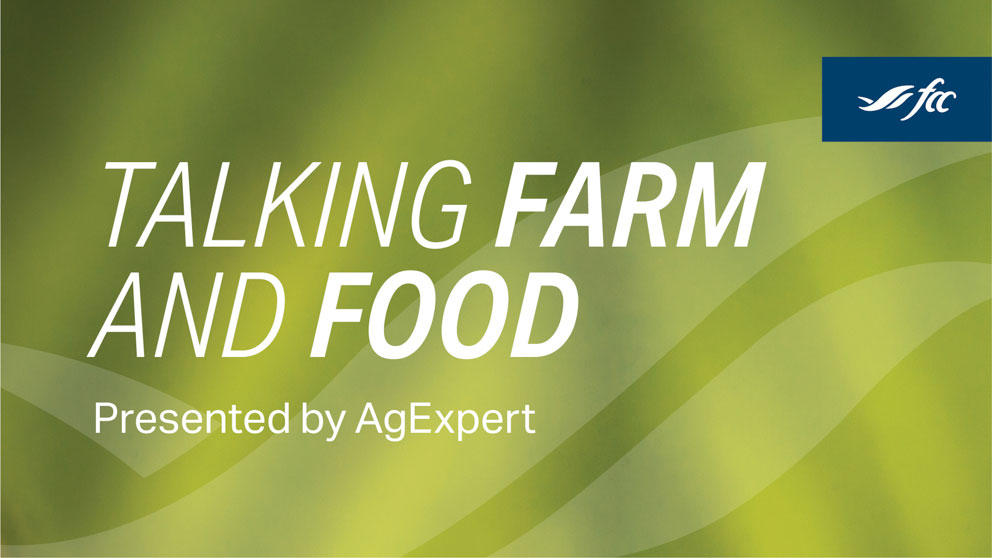How Canadian ranchers are writing the rulebook on sustainability – and winning

Thousands of Canadian ranchers proudly produce beef, and while it’s enjoyed at a restaurant, over a weeknight barbecue or Sunday dinner, more consumers are curious about its production. Specifically, whether it was sustainable and the impact it had on the environment.
The Canadian Roundtable for Sustainable Beef, an industry-led group, has designed a standard, readily available framework for all producers on what is considered sustainable production practices.
But how difficult is sustainability to tap into, and what does it take to stay in it? Is it ultimately good for business? Are producers profiting, or is it just a feel-good label?
Coy Schellenberg, Beechy, Sask.
Coy Schellenberg, wife Laura-Lie and their four kids operate Perrin Ranching, a cow-calf operation in southwest Saskatchewan. They’ve been a part of a sustainable beef program for multiple years and are glad to see a framework created to reward producers for work that the overwhelming majority are already doing.
“It was a movement to acknowledge the good practices and stewardship that already exists within the beef sector,” he says.
For Schellenberg, the overall cost to join was less than $1,000, and he explains that the initial audit is the most difficult part of the process.
Don’t let the paperwork scare you
The audit took one full day, and he needed to present records and fill out various forms for the rest of the joining process. Throughout a given year, Schellenberg says there is one-and-a-half days worth of work. He adds, though, that if a producer is on top of their paperwork, it’s not burdensome at all.
He says the paperwork should not be a deterrent and points out a sustainability program may compel a producer to record information that can help them stay on top of things.
Sustainability as a business decision
A savvy businessman, Schellenberg says he joined because it was both the right thing to do and there were small financial paybacks. Currently, the cheques he receives offset the program’s costs, but not by much.
“For us, it’s break-even at this point,” he says, but he has hopes for the future. “We need consumers to buy in and realize we are sustainable as producers.”
He says the hardest part was getting over the psychological side and defensiveness that producers can have.
“There’s a false perception that it’s going to be burdensome on operations, but it’s not nearly as burdensome as you think, and I see returned value, as well as better recordkeeping,” he says.
Room to grow
For Schellenberg to earn money on his cows, anywhere from $15 to $20 extra per head, the animal must go through the entire value chain at approved facilities for his sustainability program.
The challenge comes in when someone in the supply chain doesn’t participate in the program. Suppose an animal goes through a certified system for 90% of its life but is finished at a non-participating packer. In that case, he receives no payment and can’t control where feedlots sell finished animals.
Producers are looking for ways to set themselves apart. This is really affordable, from both an economic and time perspective."
Overall, he is glad to be part of the sustainability program.
“Producers are looking for ways to set themselves apart,” says Schellenberg. “This is really affordable, from both an economic and time perspective. There are lots of ways we can set ourselves apart. Producers should use as many as they can. This is very conducive to farms and ranches across Canada.”
Jill Harvie, Olds, Alta.
Jill and Cole Harvie have been involved in sustainable beef for more than a decade and have no intention to stop. At Harvie Ranch, the two maintain a 250-head Hereford and Charolais herd. For Harvie, she is proud to be part of a sustainability program that puts not only her ranch but the collective ranges of Canada on display for the world to see.
Canadian leadership in sustainability
“Canada has shown incredible leadership globally to make sure we are measuring what we’re doing,” Harvie says. “If there’s a question about how effective we are doing something, we have a baseline and can show continuous improvement.”
Harvie explains that getting into sustainability programs for most Canadian ranchers is not too demanding, as most producers already do these practices. Like Schellenberg, Harvie says time spent within a sustainability program relates more to record keeping than anything else.
“Luckily, much of that information is already being collected by ranchers in one way, shape or form. Now it’s just a matter of linking it to the way your sustainability program wants to receive it,” she says.
Sustainability for exports
Sustainability programs are widely seen worldwide as the way of the future, especially in high-value markets such as the European Union, where consumer demands are high.
“Certain markets are looking for the pristineness of Canada — our fresh water, healthy cattle, friendly people, even cowboys — it’s not just an image, but it’s backed up by data and information,” Harvie says. “The more transparent we can be, the more well-positioned we can be.”
Challenge to be better
Harvie believes part of the business case to engage in a sustainability program is that it helps producers bring their operation up to its best possible standard. After joining the program, her family focused on finishing important watershed developments on their property and believes that such programs help bring out the best in producers.
Beyond that, she’s been privy to meetings with big names in the corporate beef world - ones she doesn’t think she would have otherwise been able to, all thanks to the program. That’s been good for her professional development and business opportunities.
“Fifteen years ago, you’d never have a chance to be in the same room as the owners of main steakhouses in Canada, or McDonald’s,” she says. “But now, especially thanks to the Canadian Roundtable for Sustainable Beef, it’s been something commonplace.”
Ben Younge, Shawville, QC
At Willow Hollow Farms, Ben Younge has always had a sustainable operation with his 230 cows – he just didn’t have the paperwork to prove it. That all changed about four years ago when he partnered with an American-based sustainability program that offered him great premiums per head.
“We found that for us to be competitive — we can’t compete with bigger feed yards — we needed to find a bit of a niche market,” he explains. “I started looking into special programs, and we realized that we were already doing the protocols to be certified.”
Stand out from the herd
Buoyed by the program’s success that celebrated practices already in play at his farm, the economic returns were a critical link in joining.
“Because of the size of our operation, it’s the only way we can survive, to try and receive more per pound than the average market price,” he says of the financial return on producing certified sustainable beef. “It was a no-brainer.”
Not long after, he joined a second sustainability program, this one Canadian-based. The third-generation rancher quickly found that this program required an on-farm audit, which he described as “just a farm tour,” and showing paperwork he already had.
Recognizing sustainability
“We didn’t even have to change much,” he says. “We just had to do a bit of paperwork. It’s nice to be recognized for these sustainable practices.”
The annual time commitment is “hardly anything,” and he says most producers likely already would qualify – it’s just a matter of applying to a program.
With a financial commitment that is only in the hundreds of dollars, it works well for Younge, considering the premiums he’s received to date when he sells.
Next, he plans to investigate selling into high-end restaurants in Quebec, believing his production practices would be welcome by patrons hoping for quality food on a night out.
Producing the best steak
“The attention we give the animals and way we treat them — the feed we use and our safety protocols — I feel like I should be able to produce the best, consistent meat possible,” says Younge. “I like the challenge of trying to get to the top.”
Younge says that his experience was straightforward because of his recordkeeping and farm setup but recognizes that it may be different at another operation. The pros and cons of joining a program must be weighed carefully.
“Each operation has to evaluate the conditions to be in one of these programs,” he says. “If they must change their whole operation around to qualify, there are costs there, too. But with our program, we met all criteria.”
Bottom line
Sustainable beef programs are easier to join than you may think. Many of the required practices are often already being carried out by the average Canadian rancher. After an initial audit, producers agree upkeep is minimal, and the opportunity for greater payouts and premiums exists.
Are you ready to go digital with your data? AgExpert can help.
Article by: Trevor Bacque

In this episode, Sherri Pauls shares her experiences of marrying into agriculture and how resiliency, regular farm meetings and humour helped her along the way.
